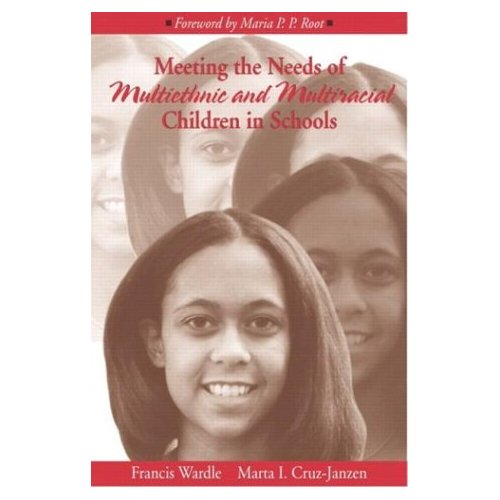Meeting the Needs of Multiethnic and Multicultural Children in Schools by Francis Wardle and Marta I. Cruz-Janzen. Publ Pearson ISBN 0 205 37608 8
This book comes with a foreword from Maria P.P. Root whose work is familiar to many PIH members. In it she claims that the book ' delivers a road map pushing readers and educators to embark on a transformative journey rarely mapped in multicultural education and its training.' Whilst the book has a US slant, there is indeed plenty that will be of interest to parents, teachers and young people here in the UK.
In it she claims that the book ' delivers a road map pushing readers and educators to embark on a transformative journey rarely mapped in multicultural education and its training.' Whilst the book has a US slant, there is indeed plenty that will be of interest to parents, teachers and young people here in the UK.
The authors are both parents of multiethnic children and established academics specialising in the areas suggested by the books title. Their frequent reference to their own children might be regarded by some as an unusual step. For me, it works enabling them to relate general theories to personal anecdotes. It would be up to any reader to judge to what extent the experiences outlined matched their own.
The need for a book such as this is summed up in the following quote 'Single ethnicity/race adolescents do not realize that, while they struggle to find their place within a single reference group, this approach is not meaningful or healthy for multiethnic and multiracial students.' The authors offer ideas for new inclusive approaches in education that would benefit all children whatever their ethnicity/ies. This means going beyond the tokenism prevalent in many schools at present.
The book moves from traditional approaches and the history of racial mixing through to looking at Multiracial children and families and communities before considering implications for schools with reference to the curriculum, materials and teachers' attitudes. The end of chapter questions and projects invite you to act or at the very least to have a reasoned opinion.
The authors belief that 'a multiethnic/multiracial child with a healthy identity celebrates his or her entire heritage, is comfortable and at ease with his or her total family and cultural background, and is able to flexibly move between single-race groups,' is likely to be shared by most PIH members. This book offers thoughtful reflections on what school and home environment would best nurture such a child.
Darren Chetty